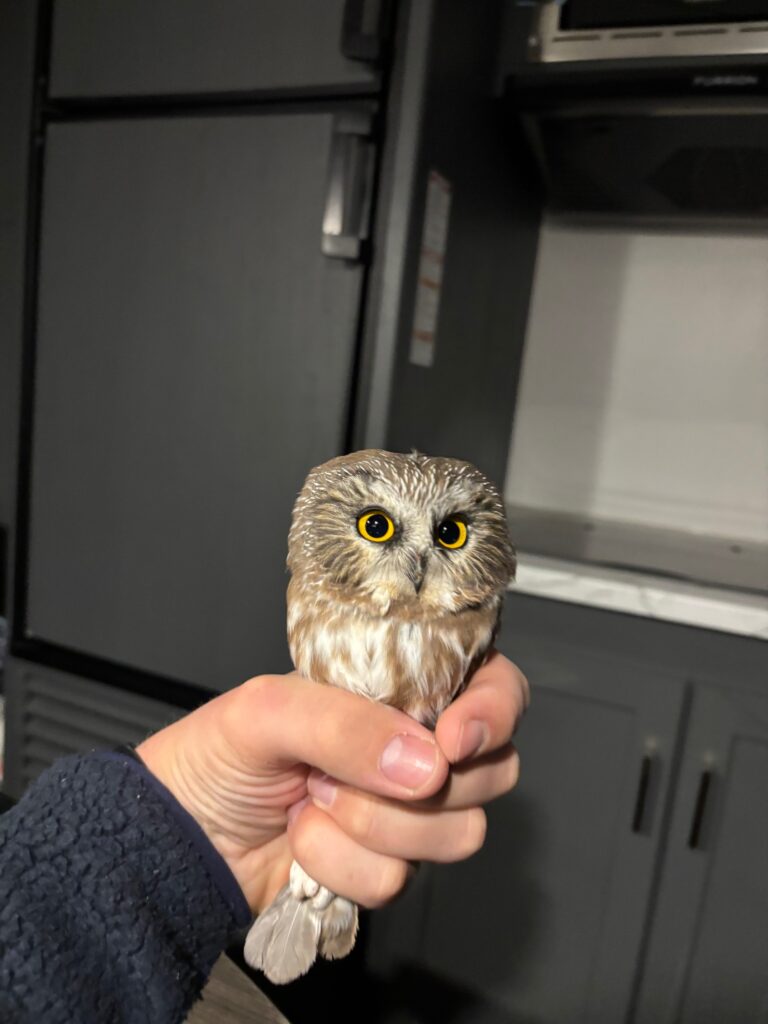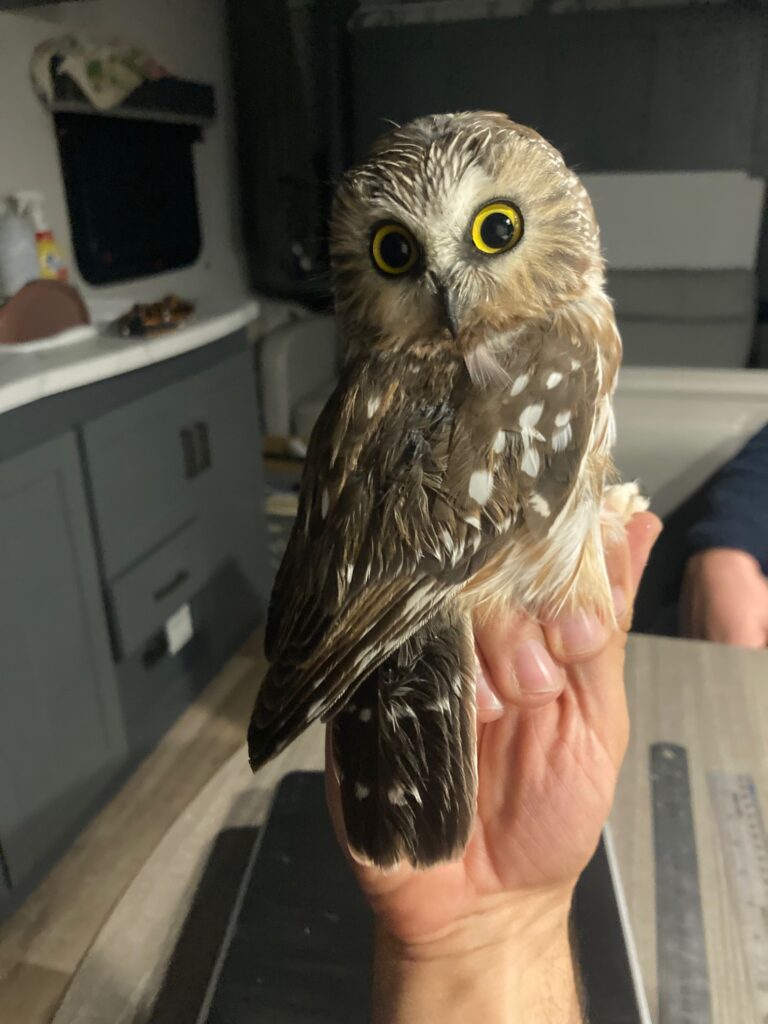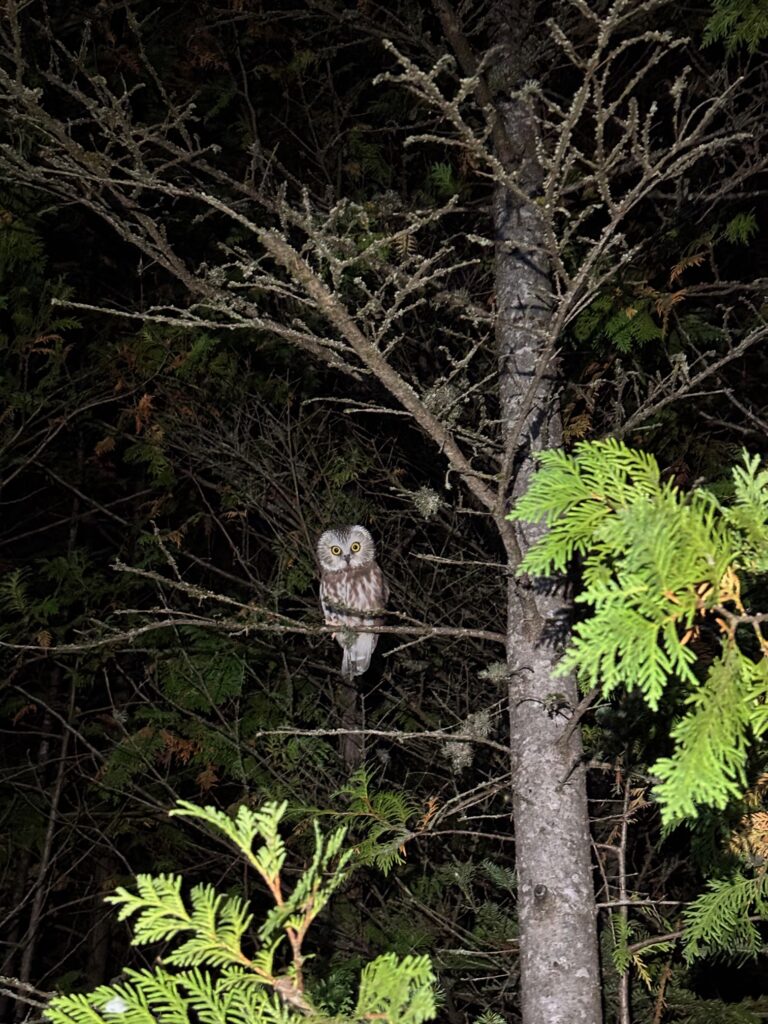After an expected slow start last week, this week was bustling with much more activity! Despite not opening our nets the 22nd due to rain and heavy moisture from fog, we finished the week with 31 new owls caught and a season total of 35 so far. Our busiest night was the 27th, where we caught 11 northern saw-whet owls (NSWO). With 7 males caught to 24 females, our sex ratio is now leaning heavily towards females. Four birds so far could not be reliably sexed. Males are, on average, smaller than females and we will discuss sexing owls in more detail in a future update.

Among these birds, an after-second year female was our first recapture of the season. Looking up her band number revealed she was originally banded in May 2022 at Whitefish Point Bird Observatory, which is ~65 miles north of our banding station here at the Straits. She was aged as second-year at the time, meaning she was born in 2021. Information such as a bird’s movements, age and lifespan, as exemplified by this NSWO, help demonstrate why banding is such an important tool for avian research and conservation.

There are numerous bird banding stations across the country and the world. The Straits of Mackinac present an ideal location for such an operation. Owls, along with several other migratory birds, often do not cross large bodies of water due to how energetically taxing it is. There are a lack of resting and feeding stopover sites and a greater exposure to the elements with no shelter. The geography of Michigan’s Upper Peninsula thus funnels the birds between Lakes Michigan and Huron to the Straits, where they can rest, feed, and cross less open water on their fall migration. The Lower Peninsula serves a similar purpose in the spring.

Expect even more owls as migration ramps up. We have occasionally heard another owl species, the barred owl (BDOW), nearby so we’re hoping for a very special guest to potentially visit our nets in the coming weeks!
Season Numbers:
Total: 35, NSWO: 35
Jake and Josiah
